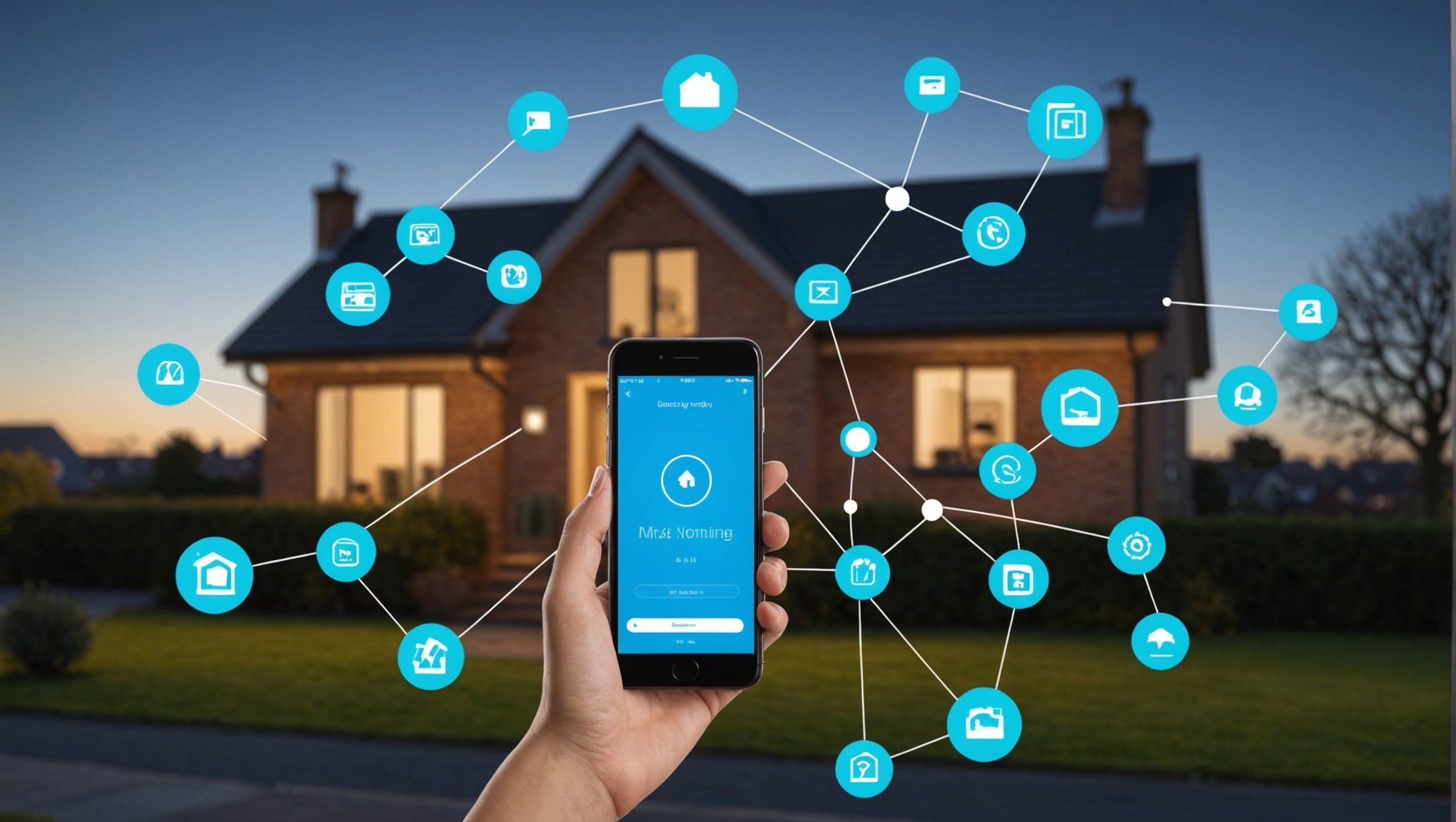Overview of IoT in Smart Homes
The Internet of Things (IoT) refers to a network of interconnected devices that communicate without human intervention. In smart homes, IoT technology powers various devices, from thermostats to security systems, enhancing convenience and efficiency. The scope of IoT extends beyond mere connectivity, offering an ecosystem of intelligent systems that learn user behaviour and automate tasks accordingly.
In the UK, current trends exhibit a swift escalation in IoT adoption within smart homes. Homeowners appreciate the seamless integration of multiple devices leading to increased operational fluency. Smart home safety remains at the forefront, with IoT-supported gadgets delivering real-time monitoring and alerts, enhancing overall security.
Have you seen this : Crafting an All-Inclusive Mental Health Strategy for UK Workplaces: A Step-by-Step Guide
Integration into intelligent systems isn’t without its safety implications. Interconnected devices can present vulnerabilities if not properly secured. Addressing these concerns involves robust encryption methods and regular security updates, ensuring data protection. Smart home safety is evolving with the application of stringent standards and best practices, enabling homeowners to enjoy the advantages of IoT technology while safeguarding privacy.
As IoT technology continues to evolve, its scope will widen, offering myriad possibilities for enhanced living environments combined with increased safety measures.
Also to read : Creating a Thriving Culture of Ongoing Improvement in UK Schools: Strategies for Success
Enhancements in Home Security through IoT
The integration of IoT applications has revolutionised how we approach home security, providing a more robust and responsive system. Types of IoT devices enhancing home security include smart cameras, motion sensors, and connected alarms. These home security devices work in tandem to offer real-time monitoring and threat detection.
Recent statistics highlight that IoT-driven solutions have led to a significant reduction in property-related crimes. For instance, studies indicate that homes equipped with surveillance technology experience a 15% decrease in burglary incidents. This reduction can be attributed to the enhanced capabilities of devices that offer immediate notifications and integrate seamlessly with public safety services.
Real-life case studies showcase how IoT applications have effectively implemented security measures. Several neighbourhoods have witnessed a drop in crime rates after deploying interconnected security systems that communicate with residents and law enforcement. Moreover, innovations like facial recognition and remote access control have further elevated the security framework.
These advancements in technology demonstrate a promising future for home security. With ongoing developments in surveillance technology, homeowners can anticipate even more sophisticated and accessible security solutions tailored to their needs.
Smart Sensors and Their Role in Safety
In the age of innovative technology, smart sensors are pivotal in maintaining safety within homes and businesses. These sensors offer multiple layers of environmental monitoring, providing essential safety alerts when potential hazards arise.
Types of Smart Sensors
Smart sensors come in various types, each designed for specific monitoring tasks such as fire, gas, and motion detection. Fire sensors detect smoke or heat increases, triggering alarms before fire spreads. _Gas sensors* identify leaks by monitoring air quality for dangerous gases. _Motion sensors* detect unexpected movements, alerting users to unauthorized access or intruders.
Integration with Home Automation Systems
Integrating smart sensors with existing home automation systems enhances safety by coordinating with smart devices. This collaboration enables seamless control, such as automatically unlocking doors or turning on lights when motion sensors are triggered during unexpected events. The synergy facilitates prompt responses and elevates security.
Real-time Monitoring Capabilities
One of the key advantages of smart sensors is their ability to provide real-time monitoring and alerts. Instant notifications on smartphones or home devices allow users to address potential hazards immediately, preventing disasters. From sensing gas leaks to detecting unauthorized entry, these safety alerts empower homeowners to act swiftly and efficiently, safeguarding their premises and loved ones.
Best Practices for Implementing IoT Safety Solutions
Implementing IoT safety solutions involves a number of key considerations to ensure devices function effectively while maintaining security. Before adopting IoT devices for safety, consider the network environment and potential connectivity issues. Ensure compatibility with existing systems and evaluate the scalability to accommodate future expansions.
To protect IoT devices from potential hacking attempts, it is crucial to follow implementation guidelines rigorously. Begin with securing your network by using strong passwords and advanced encryption methods. Regularly update device firmware to patch vulnerabilities and deploy network security solutions like firewalls and intrusion detection systems.
Proper device configuration and management are essential to minimize risks. Use unique usernames and passwords specific to each device, avoiding default settings that are easily exploitable. Ensure robust authentication protocols are in place, and restrict physical access to the devices wherever practical.
Furthermore, establish a routine for monitoring and maintenance to promptly identify and address any security breaches. Educate users and staff on IoT safety tips, encouraging vigilance in recognizing suspicious activities. By understanding these practices, you can effectively manage and safeguard your IoT ecosystems for safety.
Potential Risks and Challenges of IoT in Smart Homes
Exploring the IoT landscape in smart homes reveals significant concerns surrounding security vulnerabilities and data privacy.
Common vulnerabilities in IoT devices
Smart devices, though convenient, often harbour security vulnerabilities that can be exploited. These vulnerabilities arise from weak passwords, outdated software, or insecure Wi-Fi connections. Users need to be vigilant in maintaining device integrity by regularly updating firmware and using strong authentication methods.
Cybersecurity threats and awareness
Cybersecurity threats are a significant risk, as hackers can infiltrate networks and compromise personal data. To combat these threats, building awareness around potential risks is crucial. Key strategies include installing robust firewalls, utilizing network encryption, and educating users on the importance of secure login practices.
Managing data privacy for users
Protecting data privacy requires careful management. Security breaches can have severe ramifications—loss of sensitive information being a primary concern. Users should adopt guidelines for securing personal data:
- Regularly reviewing privacy settings
- Limiting data collection to necessary parameters
- Using VPNs
By addressing potential threats and prioritising cybersecurity measures, smart home environments can remain secure and private for all users.
Future Trends in IoT Safety Solutions
With innovations in IoT rapidly advancing, new technologies are continuously emerging to enhance safety features. As we look towards future technologies, the integration of artificial intelligence (AI) and machine learning stands out as a paramount development. These technologies are set to transform smart home security by enabling systems to predict potential threats and respond proactively.
At the forefront of these innovations is the use of predictive analytics, which allows devices to detect unusual patterns and alert users seamlessly. Smart home developments are expected to incorporate more comprehensive data analysis capabilities, ensuring that security systems are always one step ahead.
Moreover, AI-driven future technologies promise to personalise security solutions by learning homeowners’ routines and preferences, creating a tailored safety environment.
Emerging technologies also include advancements in sensor technology, which aim to provide more accurate environmental feedback. These innovations lead to smarter decision-making processes for devices, enhancing overall smart home developments.
As these trends evolve, it is essential for users to stay informed and consider adopting advanced IoT solutions to maximise their home security and safety in an increasingly connected world.






